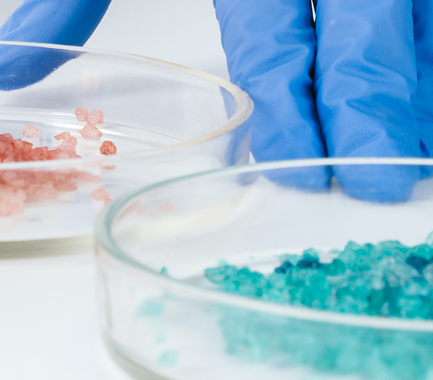Your contact
PENPET-Team - Hamburg

Tim Meister
Sales
Tel. +49 (0) 40 - 675 7 99 40
sales@penpet.de
Get in touch with us.
n-Butyl methacrylate
n-Butyl methacrylate (nBMA) is an ester of methacrylic acid. This is obtained by reacting with n-butanol and is an important starting material for the manufacture of plastics. The compound also occurs naturally in smaller amounts, for example in the Mosla chinensis plant.
n-Butyl methacrylate is mainly used as a building block for polymerisation: When heated, its components dissolve and are available for concatenation. The resulting polymers are used in many resins, adhesives, varnishes, paints and toners. Products such as contact lenses or oil additives for medical and dental products are also based on the polymers of n-butyl methacrylate. The compound is also used in paper and textile finishing.
You can easily and reliably order the required amount of n-butyl methacrylate from PENPET. We look forward to your inquiry for an individual offer. Deliveries are made in tank containers and IBCs.
CAS no. 97-88-1
EINECS no. 202-615-1
Molecular formula: C8H14O2
Synonyms: nBMA, BMA, butyl methacrylate, n-butyl methacrylate, butyl methacrylate, 2-methyl butyl acrylate, butyl 2-methacrylate
Application examples: Polymerization for the production of resins, adhesives, lacquers, paints and toners
More Information
n-Butyl methacrylate is used as a monomer for the production of polymers, but as an ester itself it consists of two clearly distinguishable components: methacrylic acid and n-butanol. It decomposes again into these starting materials when heated.
Both components are colorless liquids. While n-butanol is highly flammable, the highly reactive methacrylic acid tends to undergo erratic and explosive polymerization.
The clear and colorless liquid is hardly soluble in water. On contact, n-butyl methacrylate floats on water due to its lower density. However, the compound is very soluble in organic solvents such as ethanol and ethyl ether. The n-butyl methacrylate vapors are heavier than air and collect on the ground. The compound is only available in solid form at very low temperatures.
When heated, the unpleasant-smelling compound breaks down into its components. This will result in the development of acrid and irritating fumes. Toxic gases are produced when n-butyl methacrylate is burned.
n-Butyl methacrylate can not only be polymerized in specific chemical processes. It also has a tendency to spontaneously, explosively polymerize, so that stabilizers are necessary for storage of the substance. It should be noted that their effect can decrease over time and due to the effects of heat.
The compound is highly flammable in both liquid and gaseous states. There is also a risk of explosion from the vapors of n-butyl methacrylate if they combine with the ambient air to form a flammable mixture (ignition temperature at 290 °C, flash point from 50 °C).
Contact with eyes causes serious irritation. Skin is also sensitive and sometimes allergic to n-butyl methacrylate. Inhalation of vapors may cause nausea, severe respiratory irritation and shortness of breath. Ingesting the liquid causes irritation of the mouth and digestive organs.
Tolerance studies on animals indicate that short-term exposure does not cause any lasting or chronic damage to health. Medical attention is still required in the event of eye contact, reddening as a result of skin contact, as well as breathing difficulties and irritation after inhalation.
